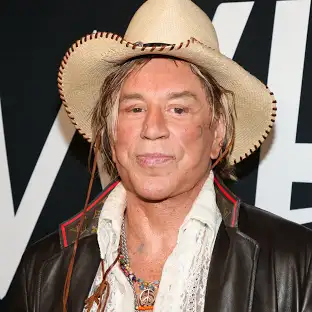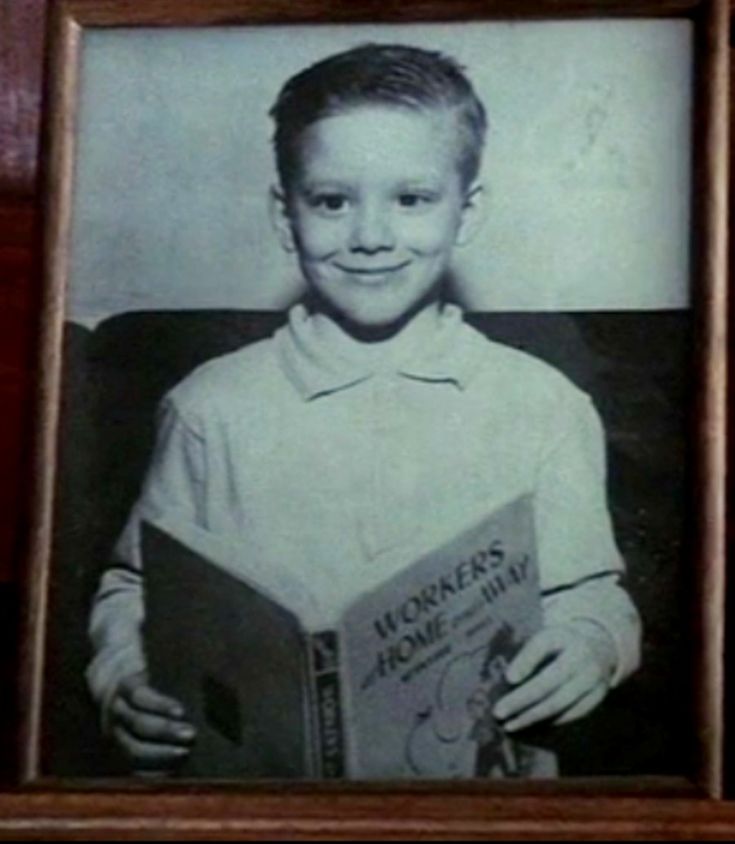
From the gritty streets of Schenectady, New York, to the glitz of Hollywood and the boxing rings of Europe, Mickey Rourke has lived a life that is nothing short of a cinematic epic.
With his chiseled good looks in youth, tempestuous career, and a deeply personal journey of pain, redemption, and resurrection, Rourke’s story is as haunting as it is inspiring.
But beneath the leather jackets, the iconic scowl, and the whispered controversies lies an Irish heart — raw, rebellious, and resilient and a traumatic childhood which we will touch on later in the article.
Mickey Rourke: Young, Wild, and Beautiful
Born Philip Andre Rourke Jr. on September 16, 1952, Mickey Rourke was once hailed as one of the most promising actors of his generation. In his youth, Rourke’s charisma and smoldering presence captivated Hollywood. Films like Diner (1982), Rumble Fish (1983), and 9½ Weeks (1986) cemented his status as a leading man. Mickey Rourke young was a phrase synonymous with sex appeal, danger, and raw acting talent.
But fame didn’t come without baggage. Raised in a turbulent household, Rourke faced a challenging upbringing. His father, Philip Andre Rourke Sr., abandoned the family when Mickey was just six.
His mother moved them to Miami, where she remarried a man named Eugene Addis — who became Mickey’s big brother in discipline but not in warmth. The strict stepfather dynamic only fueled Rourke’s inner rebel, a characteristic many trace back to his Irish roots.
Irish Blood, Rebel Soul
Mickey Rourke’s Irish ancestry is something he wears like a badge of honor. His maternal lineage traces back to County Cork, Ireland — a region known for its fierce independence and poetic soul. In interviews, Rourke has acknowledged this heritage, crediting his Irish blood for his fighting spirit and emotional depth.
“I come from Irish stock,” he once said, “and the Irish, man, we don’t go down easy.” That same Irish resilience would prove essential during the many dark chapters of his life.
Mickey Rourke and the Boxing Ring
Before Hollywood, boxing was Rourke’s first love. A promising amateur boxer in the 1960s and early 1970s, Rourke had a record of 27 wins and 3 losses. He stepped away from the ring to pursue acting but returned in the 1990s, disillusioned with the film industry.
Rourke’s boxing comeback was intense — and costly. Between 1991 and 1994, he fought several professional bouts. He suffered multiple concussions, a broken nose, smashed cheekbones, and other injuries that would later alter his face. The reconstructive surgeries he underwent would become a focal point of media speculation. When people ask, “When did Mickey Rourke’s face change?” — the answer lies here: in the blood and sweat of the ring.
In Rourke’s own words: “Most of it was reconstructive surgery. I had five operations on my nose and one on a smashed cheekbone.” He may have lost some of his physical allure, but he gained something far more profound — authenticity.
Mickey Rourke’s Fall and Rise
By the late 1990s, Rourke’s career was in tatters. His erratic behavior, clashes with directors, and volatile reputation made him persona non grata in Hollywood. As the saying goes, he was a star that burned too brightly and too fast.
But Irishmen are stubborn, and Rourke wasn’t done.
The 2005 film Sin City offered a glimpse of the old fire, but it was The Wrestler (2008) that brought him roaring back. His portrayal of Randy “The Ram” Robinson — a washed-up wrestler seeking redemption — mirrored Rourke’s own life. The performance earned him a BAFTA, a Golden Globe, and an Oscar nomination. Suddenly, Mickey Rourke today wasn’t a cautionary tale but a story of survival.
Robert De Niro and Mickey Rourke: A Cold War
Hollywood thrives on rivalry, and few were as icy as that between Robert De Niro and Mickey Rourke. The tension began on the set of Angel Heart (1987). Rourke has claimed that De Niro refused to speak to him during filming and, decades later, allegedly blocked him from a role in The Irishman.
When asked, “Did Robert De Niro and Mickey Rourke get along?” the answer is a resounding no. Rourke, never one to mince words, went on record saying, “De Niro’s a crybaby and a backstabber.” Ouch. The Irish don’t forget — especially not Rourke.
AJ, the Loyal Companion
One of the lesser-known but deeply touching aspects of Mickey Rourke’s life is his love for dogs — especially his late chihuahua, AJ. During his darkest moments, when fame had faded and friends had vanished, AJ was his constant.
“I wouldn’t be here without my dogs,” Rourke once said during an acceptance speech, holding back tears. AJ, and his other canine companions, gave him the love and loyalty he often lacked from people. The bond was so strong that Rourke even had AJ’s name tattooed on his arm.
Mickey Rourke and Iron Man
In 2010, Rourke joined the Marvel universe as Ivan Vanko (Whiplash) in Iron Man 2. While the film was a commercial success, Rourke expressed disappointment over how much of his character development was cut from the final version. Still, it marked another chapter in Rourke’s career — one where he found space in blockbuster cinema without compromising his edge.
Fans who remember Mickey Rourke boxing were thrilled to see his physicality channeled into the role of a vengeful, brutal villain. Once again, Rourke proved he could still go toe-to-toe with Hollywood’s biggest names.
What Happened to Mickey Rourke as a Child?

“I’ve been to hell. I’m not going back.”
To understand the man, one must understand the boy.
Rourke’s childhood was marred by abandonment, violence, and instability. His biological father walked out early, and his stepfather ruled with an iron fist. Raised in a working-class Irish-American household, young Mickey often sought solace in sports and the streets. Acting wasn’t an initial ambition — surviving was.
Mickey Rourke’s journey from a violent childhood to Hollywood stardom is nothing short of tragic brilliance. Before the fame, before the fall, there was pain—a lot of it. Born into chaos, Rourke grew up in a home plagued by abuse and dysfunction. His stepfather was violent, and the young Mickey found himself retreating into survival mode, learning early how to mask vulnerability with toughness.
He escaped the trauma the only way he knew how: fighting. First in the boxing ring, then on the screen. His raw intensity came from a real place. When Rourke emerged in the 1980s, he wasn’t just another good-looking face—he was a powder keg of emotion and unpredictability, channeling a childhood spent in fear into magnetic, edge-of-your-seat performances.
But the demons never left. As his fame soared, so did his self-destruction. He torched his own career with the same fury that once helped him survive. Hollywood stopped calling. He returned to boxing, battered his body, and all but disappeared. For over a decade, he lived in isolation, sharing his life only with his dogs—his sole source of comfort and loyalty.
Then came The Wrestler. In the role of Randy “The Ram” Robinson, a broken-down fighter clinging to faded glory, Rourke wasn’t acting. He was remembering. The film’s aching realism hits because it’s infused with his truth—years of pain, loss, regret, and resilience. Every moment on screen feels lived-in, because it is.
His face, no longer the pretty mask of youth, tells its own story: the swollen eyes, the scarred skin, the weariness. It’s not makeup—it’s life, written across his features. The performance doesn’t just reflect the character’s fall; it reflects Rourke’s own war with himself. And his triumph, too.
“I’ve been to hell,” Rourke has said. “I’m not going back.” It’s not just a quote—it’s a vow, born from childhood wounds that never quite healed, but somehow forged a survivor. In The Wrestler, Rourke does more than act—he exorcises ghosts, reclaims his voice, and shows the world what redemption really looks like.
The trauma left scars that never fully healed. But it also gave Rourke a depth and vulnerability that would make his acting unforgettable. The boy who grew up fighting in alleyways would go on to fight for his place in film history.
What Ethnicity is Mickey Rourke?
Mickey Rourke is of mixed European descent, with strong Irish roots on his mother’s side and some Scottish and German heritage as well. However, it’s the Irish blood that he claims and channels most. His personality — fiery, sensitive, unapologetic — feels lifted from an Irish ballad or boxing legend.
Mickey Rourke Net Worth and Legacy
As of today, Mickey Rourke net worth is estimated to be around $10 million. While he’s not among the ultra-rich Hollywood elite, wealth was never Rourke’s currency. His life has always been about passion, authenticity, and fighting the odds — not playing it safe.
His legacy is a complex one. He’s an actor’s actor, a tortured artist, and a symbol of resilience. He’s also a cautionary tale about the price of fame and ego. But perhaps most of all, Mickey Rourke is a survivor — an Irish warrior whose story is still being written.
FAQs About Mickey Rourke
Q: What happened with Mickey Rourke?
A: Rourke rose to fame in the 1980s, faced a career decline in the 1990s, returned to boxing, and made a major comeback with The Wrestler. His journey has been one of immense highs and devastating lows.
Q: Did Robert De Niro and Mickey Rourke get along?
A: No. They had tension during Angel Heart, and Rourke later claimed De Niro blocked him from roles.
Q: When did Mickey Rourke’s face change?
A: During his boxing career in the 1990s, he sustained multiple facial injuries that led to reconstructive surgeries.
Q: What ethnicity is Mickey Rourke?
A: He is of Irish, Scottish, and German descent, with a strong identification with his Irish roots.
Q: How rich is Mickey Rourke?
A: His net worth is estimated at around $10 million.
Q: What happened to Mickey Rourke as a child?
A: He experienced a turbulent childhood marked by abandonment, a strict stepfather, and early trauma — experiences that shaped his intense persona.
Final Thoughts
Mickey Rourke is more than an actor. He’s a myth, a fighter, a lost boy, and an Irish poet in leather boots. From Mickey Rourke young to Mickey Rourke today, his story remains one of the most fascinating in Hollywood history — and it’s far from over.



